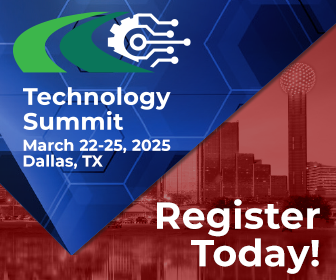- Home
- Michael Bloomberg's Electric Vehicle Vision Points To Essential Role For Tolling
Stories
Michael Bloomberg's Electric Vehicle Vision Points to Essential Role for Tolling


Former New York City Mayor Michael Bloomberg is pointing to the rise of electric vehicles as the latest good reason to get on with the job of refurbishing and modernizing the United States’ decades-old interstate highway system.
Which means one of the nation’s highest-profile infrastructure advocates is citing one of the world’s hottest new technology trends as a catalyst for essential highway improvements that—by definition—will make user financing mechanisms an even more important tool to pay for the work.
For years, one of the major knocks against electric and other alternative vehicles has been that they erode gas tax revenues that are already increasingly marginal, 25 years after the last gas tax adjustment passed the U.S. Congress. But Bloomberg takes a bigger-picture view, starting out from the value the original interstate network delivered to Americans, and ending with a vision of what a modern system could be.
One of Our Best Investments
“More than 60 years ago, President Dwight Eisenhower signed the Federal-Aid Highway Act, funding the world’s first national system of modern highways,” he writes. “It was one of the best investments our nation has ever made. By integrating our economy and connecting U.S. goods to markets around the world, Eisenhower’s modern highway system helped propel the American economy to new heights.”
But today, those roads are “stuck in the past,” he contends, amounting to “an aging relic that is not keeping up with advances in driving. As vehicles increasingly rely on computers for navigation, our highways lack the technology, such as digital signs and road sensors, to guide them.”
But Bloomberg, who currently serves as the United Nations Secretary General’s special envoy for climate action, sees a much simpler technological bolt-on as the most important missing piece along the nation’s major highways.
“The most pressing technological void—and the one that can be filled most easily and inexpensively—is the absence of charging stations” to power an emerging fleet of electric vehicles, he writes. “One of the obstacles preventing more Americans from buying electric vehicles—which release none of the pollutants that harm our health and climate—is the shortage of charging stations. People won’t buy an electric car that they can’t easily recharge anywhere they go.”
Bloomberg published his comments in mid-September. But looking back on them through the prism of the major climate science report released earlier this week by the Intergovernmental Panel on Climate Change, two things are crystal clear:
• That EVs are part of an integrated, last-ditch technology and policy strategy to protect life on Earth as we know it; and
• That tolling and other forms of user financing are an essential cornerstone for that strategy, unless anyone can think of another practical, achievable way to pay for major infrastructure investments to support an essential technology that will further erode state and federal gas tax revenues.
Federal Leadership for a Competitive Highway Network
Bloomberg points to states like Nevada and initiatives like the West Coast Electric Highway coalition that are making EV chargers more commonplace. But a patchwork network of support is still producing inconsistent results across the country.
“In much of the U.S., many chargers only work for some brands of vehicles, and drivers need to go miles out of their way to find a charge,” he writes. “While the number of charging stations is growing, we need federal leadership to transform a patchwork of regional routes for electric vehicles into an integrated, nationwide network that allows Americans to easily travel the country—just as Eisenhower’s highway act did.”
Bloomberg also points to electrification as yet another area of technology and innovation where America will fall behind if it fails to take action.
“China—already miles ahead of the U.S. in high-speed rail and electric vehicle adoption—recently opened its first stretch of highway paved with solar panels,” he writes. “Sweden opened a road with built-in electric rails that charge cars as they drive, and Israel is building a road that can wirelessly charge electric public buses.”
Though some of those new technologies will fall by the wayside, they point to a trend that governments should embrace—and that reliable toll revenue can enable.
“The U.S. should lead the way in pioneering modern highways, and the first step is the easiest: getting more people into electric vehicles by giving them the confidence that they won’t get stranded on the side of the road,” Bloomberg states. “Other steps—like standardized signage and rules of the road for autonomous vehicles that prioritize safety—also wouldn’t cost much, and the federal government should be moving more quickly on each.”

Joining IBTTA connects you to a global community of transportation professionals, offering unmatched opportunities for networking, knowledge-sharing, and collaborative innovation in the tolling and transportation sector.
Follow IBTTA on social media for real-time updates on transportation trends and collaborative opportunities.





